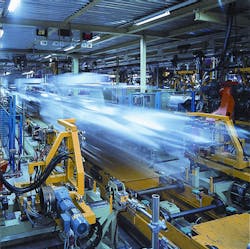Automation Services Reduce Downtime for Manufacturers
“Downtime is a big concern because the cost associated with it is so high,” says Larry O’Brien, a research director with ARC who specializes in process automation solutions, adding that a single incident at the aforementioned refinery can wipe out the plant’s annual profitability. “If you have an unplanned incident and it takes you 10 days to get your plant back up and running again you can imagine how much you are losing.”
O’Brien says that Automation Services has become the fastest growing sector of the automation industry. “We see the areas that are growing the fastest: Remote monitoring, outsourced maintenance, training and education services and high level management consulting like audit of alarms. Everything from patch management to version upgrades and cyber security. The big vendors can really handle the breadth of needs. It just depends on what the end user requires. Technical support tends to be more ad hoc, but it’s growing along with the rest of the market. Some suppliers are really good at it.”
Magnetecs, Inc. is a case in point. The Inglewood, CA-based company is developing an electromagnetic catheter guidance system for operating rooms. When they started laying out the control system in January they had a short deadline and relied extensively on their vendor, Siemens Industry, Inc. to meet it. To complicate the situation the control engineer doing the PLC design work hadn’t worked with Siemens in almost two decades and was carrying baggage from a negative experience.
“My experience with Siemens in the past was sketchy,” says Mason Mattenson, Magnetecs Inc. “In the early 90’s I was working on a project with an S5 PLC, we were having a problem with it and I went online and tried to get support and before they’d let me into the literature library I had to fill out an application. A day or so later I was told I couldn’t have access ‘because I wasn’t in Europe.’ Hence my use of a competing PLC vendor ever since. When I got the call for this project everything looked great but they were using Siemens because of its penetration overseas. I took the interview anyway and when I saw what they were doing I decided to see if Siemens had changed.
Today, Mattenson is glad he made the decision he did. “I was just overwhelmed with the support I got. I couldn’t believe it. I went from never having seen a Siemens processor to having the system up and running in three months and a lot of the credit for that goes to the help I got from Siemens. It actually took me by surprise because after working with another major automation supplier I was used to jumping through a lot of hoops.
“Typically when you have a PLC problem, it’s at a very inconvenient time. You don’t want to waste time looking around for a customer ID number, you just want to get some help.”
“Everyone has problems. You are judged on how you react to those problems,” says Al Corcoran, a marketing manager responsible for Siemens’ SIEPRO support program. Unlike 1991, Siemens now offers a basic support package that provides free online access to all the relevant manuals and free hotline support.
“The online site is wide open,” says Corcoran. “There is no fee to participate. Our strategy is to make as much information available to our customers as easily as possible. There is no exclusive content.”
Additionally, the company offers the pay-to-play SIEPRO program for customers that either have more demanding or unique needs. “Priority customers tend to be continuous process industries with very high downtime costs.”
According to Corcoran the benefits to end users are significant. “The biggie is time. You get a shorter time to solution which in turn saves money associated with downtime. Ultimately this leads to improved total cost of ownership and improved overall equipment effectiveness; two metrics that are becoming more and more important.”
Corcoran believes that having a good services relationship with your end users is a critical competitive factor in the current economic climate. He refers to a case study involving a customer satisfaction survey by a large telecommunications vendor. “All the respondents who answered ‘will you do business with us in the future’ with a ‘yes’ had experienced a failure and had a positive service experience. That was like a light going on for me. When a customer has a good services experience, you drive their loyalty through the roof.”
Average cost of downtime per year: Refining: 1-8% PetroChem: 2-5% Food and Bev: 1-10% ~ Larry O'Brien, ARC
For information on Siemens Support Programs please click here.
For access to the Siemens Support Portal please click here.

